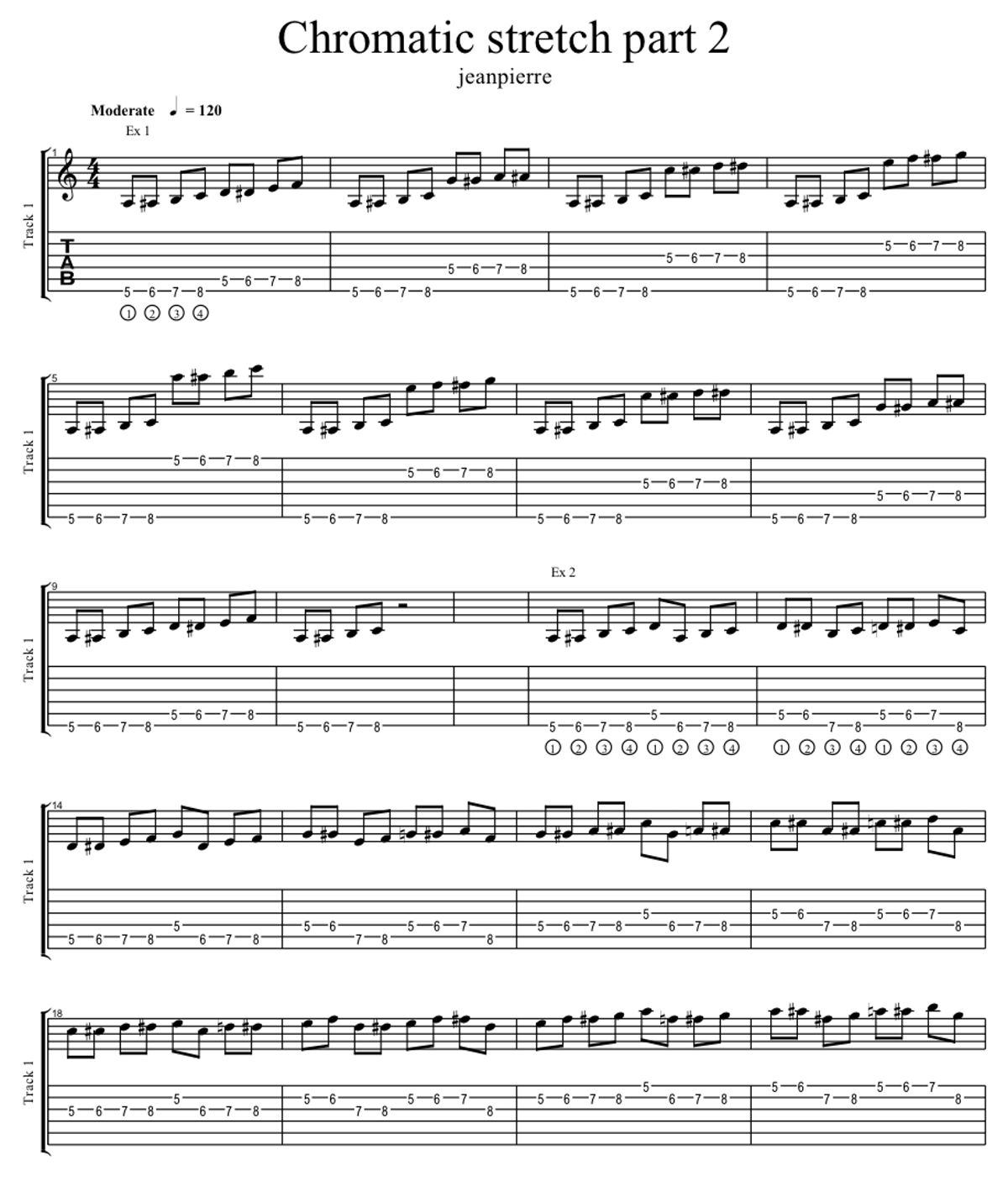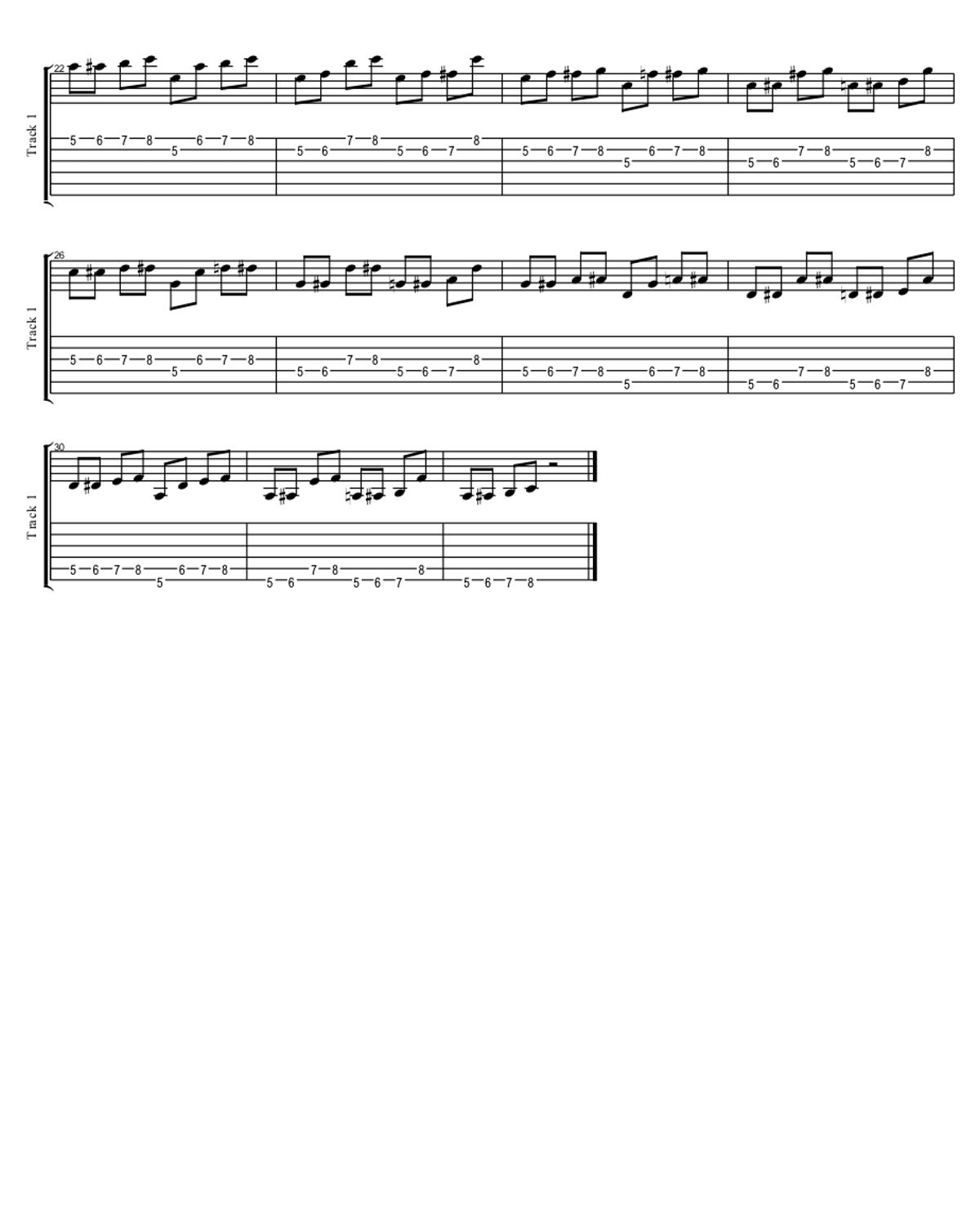How did the exercises in Part 1 go? Tough, but worth the effort eh? I hope that there were no quitters though, as that's a word not found in my book. Let's check out part 2 now.
Exercise 1 seems to be easy, no? But the golden rule 'no fingers in the air' is still applicable on this one! So remember that you can only lift a finger at a time even though you think it's impossible to do after you stretch more than three strings. I can assure you that it can be done and that the results will be super! Alternate pick, and don't play too fast as you'll be defeating the purpose. What we're after here is hand stamina, dexterity and control. Speed picking is something else and practiced at another time.
Exercise 2 is a very good dexterity and picking exercise. Like the tab will show you you'll be playing 5 notes instead of 4 every time instead of the usual 4 you play in the normal chromatic exercises. This helps your sense of timing too. Use strict alternate picking as usual. This time you can lift your fingers but be sure to keep them as close as possible. This is one of those exercises that can really help your cross picking technique. Then move up and down the fretboard.
With these two articles packed with exercises you can rest assured that you'll be giving both your hands a very strong workout. Remember to isolate any problem(s) you might face while playing them and zoom on the part that's troubling you. You can rearrange them to fit your technique but remember not to alter too much their content, as then they'll become something else! If done for 30 minutes daily for six days a week your playing will 'seriously' get better. Try them for a month and you'll see!
Keep up the hard work.


Jean-Pierre Zammit is a guitarist and instructor from Malta who has been playing guitar since the age of 14.
Zammit uses complex techniques, time shifts and scales in his writing, and always puts the song and the message he wants to portray first.
His is endorsed by Music Man guitars to use their Axis BFR models and Ernie Ball strings.